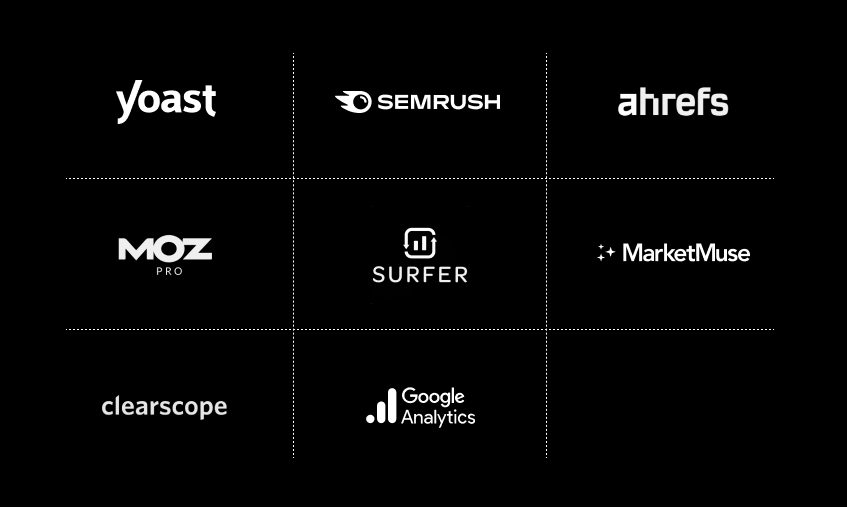Efficient content management is essential for maintaining a high-performing B2B website. But maintaining a consistent flow of high-quality content can be challenging—unless you have the right tools. As digital strategists and marketing and communications (MarCom) leaders, understanding how to streamline workflows, manage versions, use staging environments, and optimize publishing processes can help you elevate your content strategy and drive results.
Let’s take a look at B2B content publishing tips and best practices to ensure your website consistently delivers high-quality, impactful content while focusing on effective B2B SEO + B2B website optimization.
Why a robust CMS matters for B2B websites
In the fast-paced world of B2B, your website is often the first place that prospective clients interact with your brand. A robust content management system (CMS) can help ensure your site delivers a seamless user experience while remaining agile enough to support ever-evolving business and customer needs.
Whether you’re scaling operations, publishing timely updates, or revamping your content strategy, a well-optimized CMS plays a key role in B2B website optimization and search engine visibility, which directly impacts your ranking on platforms like Google Analytics.
B2B Content Publishing Workflow: A Step-by-Step Guide
Download your step-by-step guide to streamline your content publishing process and ensure smooth workflow management.
CMS workflow management
When it comes to publishing content, consistency is critical. Streamlining content creation and approvals with a well-defined workflow can significantly reduce bottlenecks and keep your content strategy on track.
- Define roles and responsibilities: Clearly assign specific roles to writers, editors, approvers, and publishers. Try using a tool like Contentful or WordPress plugins to define user roles.
- Set up a content calendar: Platforms such as Trello, Asana, or HubSpot can help you plan and manage content schedules, which makes it easier to keep up and ensure consistency.
- Automate workflows: Your team is busy—and you don’t want important tasks to fall through the cracks. Lighten the load by leveraging CMS features or integrations to automate notifications and task assignments.
- Standardize guidelines: Maintaining a consistent brand presence, including voice, tone, and visual identity, is essential to building brand value and recognition. Maintain a style guide and provide templates to ensure content consistency, no matter who’s creating it. (We recommend opting for an online style guide using Frontify.)
Versioning and staging
When you’ve got multiple teams working on content, careful management is important. Content versioning best practices and CMS staging environments are vital for ensuring error-free publishing and B2B website optimization.
- Implement version control: Version control issues can impact content quality. CMS features like revision histories in WordPress or version tracking in Contentful can help you keep track of and manage updates. If your site (e.g., UX) needs more attention, allocate extra hours—but maintain at least minimal progress on other sprints to keep the balance.
- Set up a staging environment: Before you deploy changes live, test them in a CMS staging environment so you can identify bugs and issues. Platforms like Pantheon or Netlify offer robust staging support.
- Establish a rollback plan: As an added safety net before publishing, be sure your CMS allows you to quickly roll back to a previous version in case of error.
Editing and publishing
The final steps in your content workflow can make or break its overall effectiveness, so be sure to plan carefully before you go live. Ensure timely and accurate releases with these content publishing tips.
- Conduct peer reviews: Never underestimate the power of a second pair of eyes. Implement a peer review process to catch errors and improve content quality.
- Optimize for SEO: Tools like Yoast SEO or SEMrush can help you optimize each piece of content for search engines. Incorporate web development keywords such as “responsive design,” “user experience,” and “B2B website optimization,” and track search engine performance by using Google Analytics to analyze organic traffic as well as keyword rankings.
- Additional tools: Take advantage of tools like Ahrefs for backlink analysis, Moz Pro for site audits, and Surfer SEO for data-driven content optimization. MarketMuse provides AI-assisted topic coverage and Clearscope can help you improve content relevance.
- Schedule publications: Finally, use your CMS’s scheduling features to time releases strategically based on audience behavior analytics. This will help you maximize visibility and engagement.
Tools and technologies: Recommended CMS tools and plugins
Choosing the right tools can make your CMS workflows more effective. Here’s a roundup of the tools and tech we recommend for optimal content publication strategy and execution.
Content management systems:
- WordPress or Drupal: Ideal for flexibility and plugin options.
- Contentful: Great for headless CMS setups and scalability.

Workflow tools:
Trello, Asana, or Jira: For project management and content planning.

SEO optimization tools:
- Yoast SEO: Enhances WordPress content optimization.
- SEMrush: Provides in-depth keyword analysis and tracking.
- Ahrefs: Offers comprehensive backlink analysis and keyword research.
- Moz Pro: Provides keyword tracking, site audits, and optimization insights.
- Surfer SEO: Analyzes top-ranking pages to offer data-driven recommendations.
- MarketMuse: Uses AI to assist in content planning and optimization.
- Clearscope: Enhances content relevance with keyword suggestions and grading.
- Google Analytics: Essential for tracking website performance, keyword traffic, and search engine rankings.

Staging support:
- WP Engine: Offers robust staging environments.
- Pantheon Hosting Platform: Offers robust staging environments.
- Vercel: Perfect for headless CMS deployments.

Frequently asked questions (FAQs)
Why is version control important in content management?
Version control helps you track changes, restore previous versions if needed, and maintain a clear history of updates, ensuring your content remains error-free and consistent.
How do staging environments improve publishing workflows?
Staging environments allow you to test changes, designs, and functionality in a secure space before making them live, minimizing risk and ensuring a polished end result.
What tools are recommended for managing content workflows?
Tools like Trello and Asana are excellent for project management, while CMS platforms like Contentful and WordPress provide integrated workflow features for seamless collaboration.
How can I optimize my content for SEO?
Use tools like Yoast SEO, SEMrush, Ahrefs, and Clearscope to identify and incorporate relevant keywords, ensure mobile responsiveness, and optimize meta descriptions and alt text for better visibility. Leverage Google Analytics to track SEO performance and identify areas for improvement.
Why is a CMS critical for B2B websites?
A CMS streamlines content creation, editing, and publishing processes, enabling B2B websites to deliver timely, high-quality content that aligns with business goals and audience needs. Additionally, it enhances search engine optimization by providing a structured approach to content updates and metadata management.
Next steps and related resources
As a leader in B2B website design for over 25 years, Clear Digital has our finger on the pulse of the latest tools, technologies, and trends in B2B website optimization—including content management. Check out these resources to learn more.
- Responsive design: Learn about our approach to responsive web design, ensuring optimal user experiences across devices.
- User experience: Discover strategies to boost your B2B website’s conversion rate in our article on B2B Conversion Rate Optimization: 3 UX Design Strategy Tips.
- Website optimization: Explore our Guide to Heuristic Analysis for B2B Website Design to improve user engagement and site performance.
Ready to optimize CMS workflows for success? Right this way.
Efficient content management is the backbone of a high-performing B2B website. By implementing streamlined workflows, robust versioning practices, and staging environments, you can ensure timely and accurate content publication that drives outstanding digital performance. Investing in the right tools and technologies will empower your team to maintain a dynamic, user-focused website that supports your business goals while improving B2B SEO and search engine rankings.
These best practices will help you level-up your content strategy, supporting broader digital marketing and business development objectives. For more insights on web design and web development, explore Clear Digital’s expert resources today. And if you’re ready to get to work, let’s talk.






